Everything there is to know about deleting files, recovering them and emptying the trash in Windows 11.
Windows 11 is the latest iteration from Microsoft that boasts of a user-friendly interface. Opinions can be divided as to whether this is the case, but one thing we will all agree on is that there has been a plethora of changes. From taskbar, action center, settings to file explorer, everything looks fresh and alive.
One of the changes you may have noticed is this revamped context menu. Right-clicking on a file doesn’t bring up the same context menu we’ve been used to all these years. Although it has been modified, the various relevant options remain, some in the form of tiles while others in the form of icons.
If you plan to delete a file or folder, the option is still accessible with the same ease, but the steps are a little different. However, the DEL the key still works like a charm.
Delete a file using the Delete icon in the context menu
When you right-click on a file, a new, clean context menu with much less options appears. If you can’t find the “Remove” option, here’s how.
To delete a file, right-click on it, then select the “Delete” icon at the top or bottom of the context menu. The icon looks like a recycle bin and is placed with the Cut, Copy, Rename and Share icons.
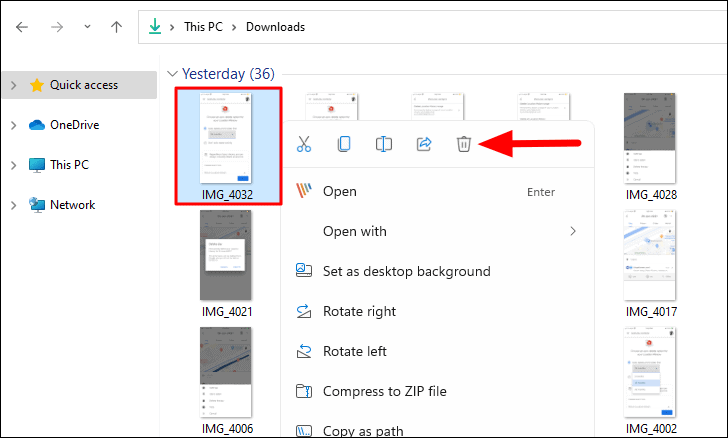
Click “Yes”, in case a confirmation box appears.
To note: A confirmation box is displayed only if it has been configured in the ‘Trash’ properties.
Delete a file from the File Explorer command bar
When launching File Explorer, you will notice the command bar at the top. It’s a quick way to access some of the basic tools, including the “Delete” icon.
To delete a file, select it, then click the “Delete” icon in the command bar.
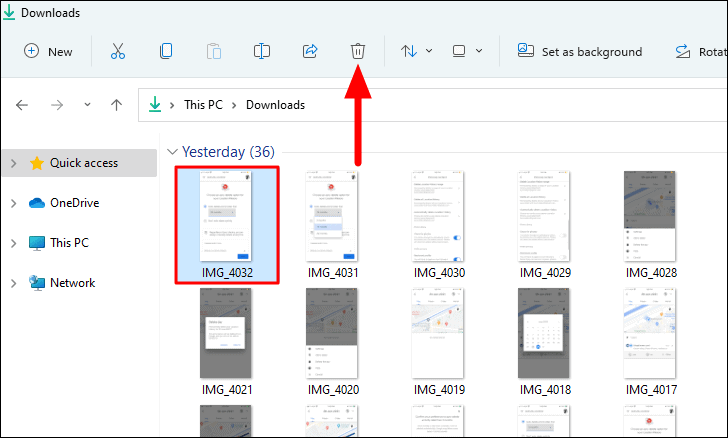
Remove a file from the legacy context menu
After years of working on the old context menu, we don’t expect you to be immediately familiar with the new one, and neither do Microsoft. Therefore, they did not completely remove the legacy context menu and it is still accessible. Here’s how to do it.
To delete a file, right-click on it to launch the context menu, then select “Show more options” to access the legacy context menu. Otherwise, select the file and press SHIFT + F10 and the inherited context menu will appear.
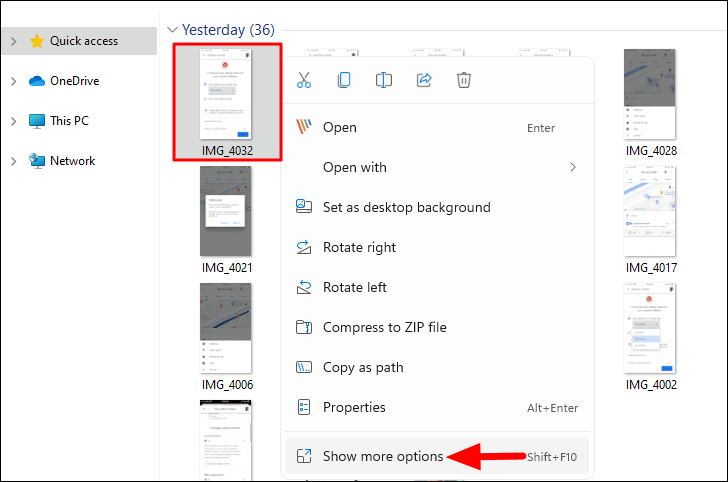
Then click on the “Delete” option to delete the file.
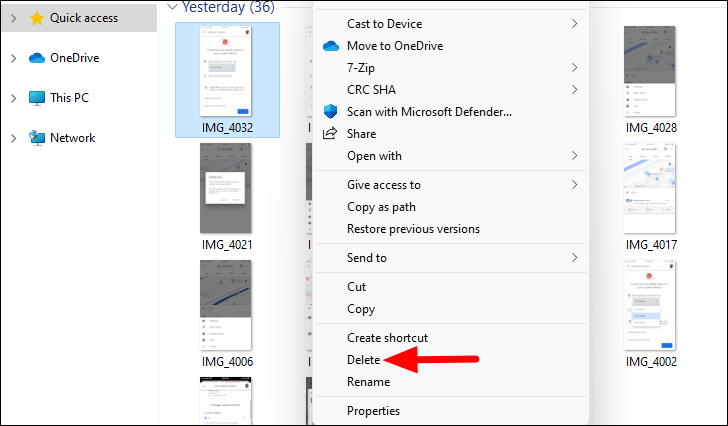
Delete a file using the keyboard shortcut
You can also delete files and folders on Windows 11 by selecting them and pressing the button DEL keyboard key. When you tap on it, the file is moved to the trash.
To permanently delete a file in Windows 11, select the file you want to delete in the file explorer, and then press the button SHIFT + DEL keyboard shortcut. When the confirmation box appears, click “Yes” to confirm file deletion. A file deleted in this way will not be found in the recycle bin.
That’s all there is to delete files on Windows 11.
Restore deleted files
If you deleted a file by mistake, you can restore it from the Recycle Bin. However, you need to restore it quickly because Recycle Bin starts to erase old files when storage space is low. You can either restore a specific file, a bunch of them, or all of those stored in the recycle bin at once.
To restore a specific file, launch the ‘Recycle Bin’ either from the desktop icon or from the ‘Start Menu’, right click on the file and select ‘Restore’ from the context menu.
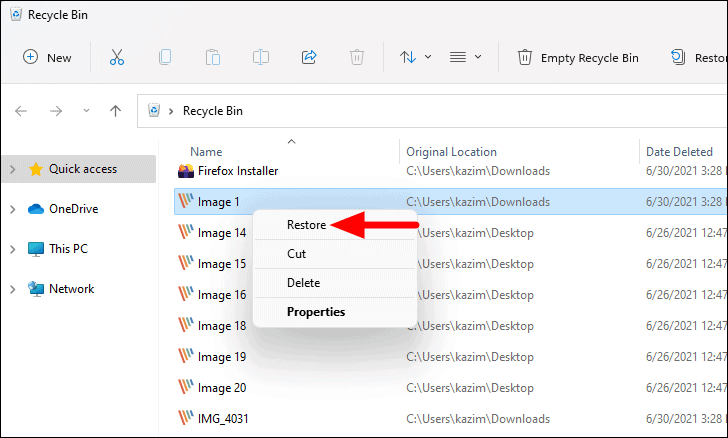
To restore some files, hold the CTRL , click all the files you want to restore, and then click “Restore Selected Items” in the upper right corner.
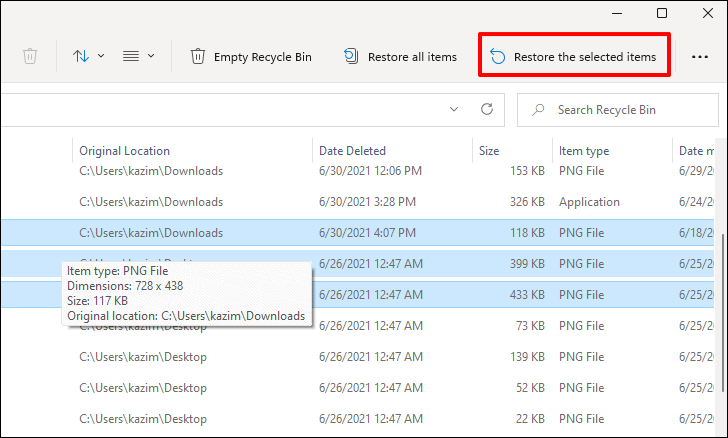
To restore all files in the Recycle Bin, just click on “Restore all items” in the upper right corner. Click “Yes” in the confirmation box that appears.
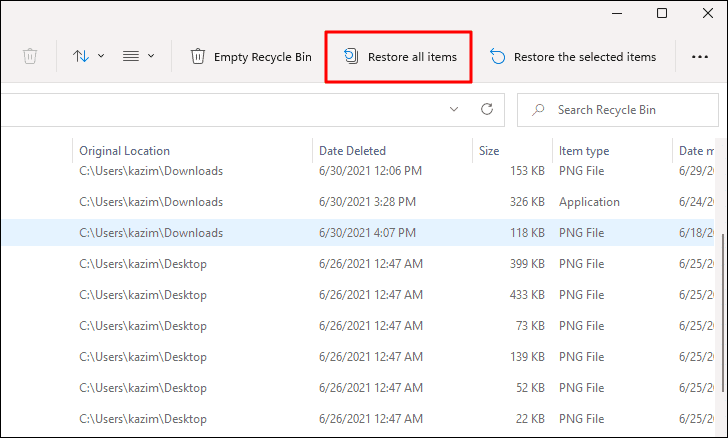
Empty the recycle bin to permanently delete files
The files you delete end up in the “Recycle Bin” and continue to take up hard drive space. If you don’t want them on your computer, you can empty the recycle bin and free up some space.
To empty the trash, click on the “Empty Trash” option in the command bar at the top.
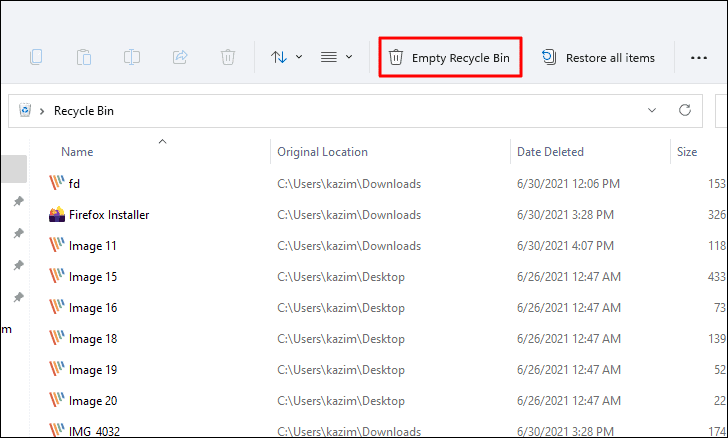
Then click “Yes” in the confirmation box that appears.
Now you know everything there is to do to delete files and folders, recover them and empty trash in Windows 11.